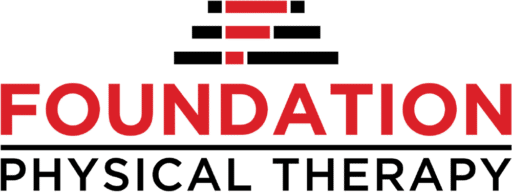From Playground to Retirement: Nurturing Bones at Every Age

Introduction
Bone health is often overlooked until problems arise, but it’s crucial for maintaining a strong, independent, and pain-free life. Strong bones provide structure, support our movements, protect our organs, and store minerals like calcium and phosphorus. Throughout our lives, our bones are constantly undergoing a remodeling process, where old bone is reabsorbed and new bone is formed. However, various factors can disrupt this balance, leading to bone loss and conditions like osteoporosis.
Importance of Bone Health
- Structural Support: They provide the framework for our body, enabling us to stand, move, and perform daily activities.
- Mobility and Independence: Strong bones allow us to maintain balance, flexibility, and agility, reducing the risk of falls and fractures.
- Pain Prevention: Weak bones are more susceptible to fractures, which can cause significant pain and discomfort.
- Organ Protection: Bones form a protective cage around vital organs like the heart, lungs, and brain.
- Mineral Storage: They act as a reservoir for minerals like calcium and phosphorus, essential for various bodily functions.
Prevalence and Impact of Osteoporosis
Osteoporosis is a common bone disease characterized by low bone density and increased risk of fractures. It’s especially prevalent among older adults, particularly women, affecting millions worldwide. The impact of osteoporosis can be significant.
Fractures: Fragile bones increase the risk of fractures, especially in the hips, spine, and wrists. These fractures can lead to;
- Long-term pain and disability.
- Reduced mobility and independence.
- Increased risk of other health complications.
- Loss of quality of life.
Height Loss: Over time, osteoporosis can lead to a stooped posture and loss of height.
Psychological Impact: Fractures and the fear of falling can lead to anxiety, depression, and social isolation.
Understanding Bone Health: Key Nutrients for a Strong Skeleton
Maintaining strong bones throughout your life is crucial for staying active, independent, and free from pain. Just like a sturdy house needs a solid foundation, our bodies rely on healthy bones for support, movement, and protection. But building and maintaining this sturdy skeleton requires a good supply of essential nutrients. Let’s explore some key players in the game of bone health!
Calcium: The Building Block
Imagine calcium as the bricks and mortar for your bones. This mineral makes up about 40% of bone weight, providing the essential building blocks for new bone formation. Dairy products like milk, cheese, and yogurt are the most readily available sources of calcium, but leafy greens, tofu, and fortified foods can also contribute. Aim for around 1,000 mg of calcium daily, especially during childhood, adolescence, and older adulthood.

Vitamin D: The Absorption Agent
Think of vitamin D as the foreman on your bone-building crew. It helps body absorb calcium from food, ensuring it gets utilized effectively. Sunlight exposure is the main source of vitamin D, but fatty fish, egg yolks, and fortified foods like milk and cereals can also contribute. Most adults need 600-800 IU of vitamin D daily, and supplementation might be necessary for those with limited sun exposure or certain health conditions.

Protein: The Structural Support

Understanding the factors that can increase your risk for osteoporosis is crucial for taking preventive measures and protecting your bone health. Let’s delve deeper into three key categories:
Age and Gender
- Age: Bone loss is a natural part of aging, starting around our late 20s. After menopause, women experience a rapid decline in estrogen levels, accelerating bone loss. Men also experience bone loss with age, but at a slower rate.
- Gender: Women are four times more likely than men to develop osteoporosis due to hormonal changes associated with menopause. However, men still have a significant risk, especially with factors like low testosterone levels.
Genetics and Family History
- Family History: Having a family member with osteoporosis, especially a parent or sibling who experienced a hip fracture, significantly increases your risk. This suggests a possible genetic predisposition to bone loss.
- Ethnic Background: Individuals of Caucasian and Asian descent have a higher risk of osteoporosis compared to African Americans and Hispanics. This may be due to differences in bone density and peak bone mass at younger ages.
Lifestyle Factors
- Diet: Calcium and vitamin D deficiencies are major risk factors for osteoporosis. A diet lacking in these essential nutrients hinders bone formation and increases bone resorption.
- Physical Activity: Weight-bearing exercises like walking, running, and dancing stimulate bone growth and improve balance, reducing the risk of falls and fractures. Conversely, lack of physical activity weakens bones and increases the risk of osteoporosis.
- Smoking: Smoking disrupts bone metabolism and reduces blood flow to bones, contributing to bone loss.
- Alcohol Consumption: Excessive alcohol intake interferes with calcium absorption and bone formation, increasing the risk of osteoporosis.
Signs and Symptoms of Osteoporosis: A Stealthy Foe

Osteoporosis, often dubbed the “silent disease,” can creep up unnoticed for years. Unlike many other conditions, it rarely announces its presence with dramatic symptoms. This stealthy nature makes early detection and prevention crucial, as the first noticeable sign is often a bone fracture.
The Silent Nature of Osteoporosis
Think of osteoporosis as a thief in the night, robbing your bones of their strength and density without making a sound. Its slow and progressive nature means most people are unaware of the condition until a minor bump or fall leads to a fracture. This lack of obvious symptoms often delays diagnosis and treatment, potentially leading to severe consequences.
Fracture Risks and Bone Density Tests
The most noticeable “symptom” of osteoporosis is often a fracture. Even a minor fall or bump that wouldn’t normally harm someone with strong bones can cause a fracture in someone with osteoporosis, especially in the hips, spine, and wrists. These fractures can be incredibly painful, debilitating, and increase the risk of future fractures.
One way to detect osteoporosis before a fracture occurs is through a bone density test. This painless and quick test measures the mineral content of your bones, providing an indicator of your bone strength and risk of fracture. Regular bone density testing is recommended for individuals at high risk, particularly women over 50 and men over 70.
Importance of Early Detection
Early detection of osteoporosis is crucial for preventing fractures and their potential complications. By diagnosing the condition early, you can:
- Start Treatment: Medications and lifestyle changes can help slow bone loss and reduce the risk of fractures.
- Prevent Fractures: Early intervention through treatment significantly reduces the risk of debilitating fractures, improving your quality of life and independence.
- Maintain Mobility and Activity Level: Strong bones allow you to stay active and engaged in the activities you enjoy, promoting overall well-being.
Preventive Measures for Osteoporosis: Building Strong Bones Throughout Life
Osteoporosis, a silent thief of bone density, can lead to painful fractures and diminished quality of life. But, the good news is that proactive measures can be taken at every stage of life to ensure strong bones and minimize the risk of this condition. Let’s explore key preventive strategies across different age groups.

Strategies for Osteoporosis Prevention in Adulthood
Even after peak bone mass, maintaining bone health and preventing osteoporosis is crucial. Here are some key strategies for adults.
- Continued Calcium and Vitamin D: Maintain adequate calcium intake of 1,000-1,200mg daily through diet and supplements if needed. Ensure sufficient vitamin D levels (600-800 IU daily) through sun exposure or supplements.
- Regular Weight-Bearing Exercise: Aim for at least 30 minutes of moderate-intensity weight-bearing activities most days of the week. Include strengthening exercises for muscles to improve balance and prevent falls.
- Healthy Lifestyle Choices: Quit smoking, limit alcohol consumption, and prioritize adequate sleep. These habits promote overall health and bone well-being.
- Bone Density Monitoring: Regular bone density tests, starting around age 50 for women and 70 for men, can track bone health and identify early signs of osteoporosis.
- Fall Prevention Measures: Reduce the risk of falls, a major risk factor for fractures, by improving home safety features, exercising balance, and using assistive devices when needed.
Conclusion

Prioritizing Bone Health for a Stronger Future,
Osteoporosis might be a silent thief, but we can be the vigilant guardians of our bones. By prioritizing bone health through early intervention, preventive measures, and a commitment to healthy habits, we can.
- Reduce the risk of painful fractures and debilitating complications.
- Maintain mobility, independence, and an active lifestyle for longer.
- Embrace a future filled with confidence and freedom from the fear of falls.
Let’s embrace the call to action! Make bone health a priority, starting today. Share this knowledge with your family and friends, and inspire others to join the journey towards stronger bones and a healthier future. Together, we can build a fortress of strong bones for ourselves and generations to come.
Remember, it’s never too late to start. Every step towards a healthy lifestyle, every dietary choice, and every bone-strengthening activity is a victory in the fight against osteoporosis. Take charge of your bone health, and pave the way for a strong, vibrant, and pain-free future!
REFERENCE
- National Council on Aging:
- https://www.ncoa.org/older-adults/health/prevention/falls-prevention
- American Academy of Orthopaedic Surgeons:
- https://orthoinfo.aaos.org/en/diseases–conditions/osteoporosis/
- National Osteoporosis Foundation. (2018). Clinician’s Guide to Prevention and Treatment of Osteoporosis: https://www.natap.org/
- Centers for Disease Control and Prevention. (2017). Stopping Elderly Accidents, Deaths & Injuries (STEADI): https://www.cdc.gov/falls/index.html
- Centers for Disease Control and Prevention:
- https://www.cdc.gov/falls/index.html
- National Institutes of Health:
- https://www.niams.nih.gov/community-outreach-initiative/understanding-bone-healt


